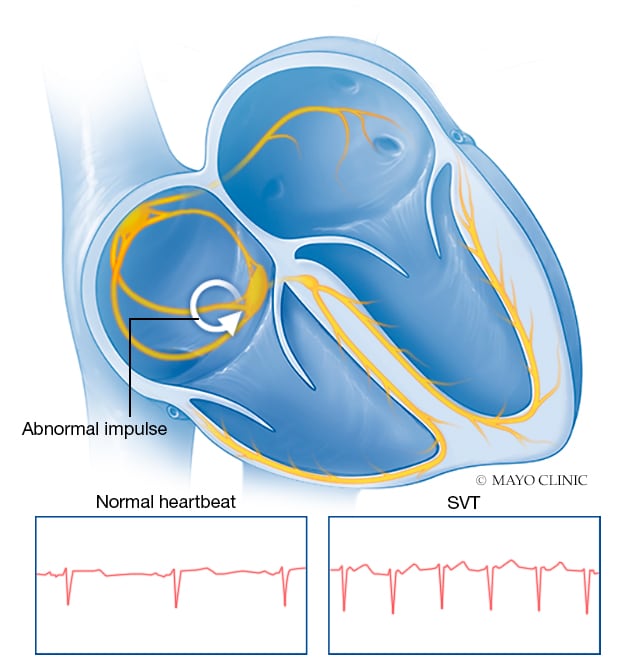


If medicine does not control SVT well enough or your child does not want to take medicine, doctors may perform an electrophysiology study to figure out the exact type of SVT and perform an ablation.Īn ablation is a procedure that uses a thin plastic tube (catheter) to destroy the abnormal tissue that causes the rapid heartbeat. This can decrease how often episodes happen. In some cases, doctors treat SVT first with medicines that correct the heart rate, like beta-blockers. Your child may need treatment if they have SVT that causes symptoms, happens often or lasts for a while. So, it is important to have your child’s heart checked by a doctor who can offer treatment if your child needs it. Also, symptoms of SVT can get in the way of athletic activity and even everyday activities. If SVT does not happen to your child often and symptoms do not bother them, they may only need to have regular checkups in the clinic.īut sometimes SVT keeps the heart from pumping the right amount of blood to the brain or other organs. Often, this type of fast heartbeat does not cause any problems. Treating Supraventricular TachycardiaĬhildren with SVT do not always need treatment. A rhythm specialist (pediatric electrophysiologist) may also use electrophysiology studies to help find the cause of a child’s abnormal rhythm and decide which treatment to use. To get more information about how your child’s heart looks and works, your child may need other tests, like a chest X-ray, exercise test or an echocardiogram.
SUPRAVENTRICULAR TACHYCARDIA RHYTHM DOCTOR PORTABLE
If an abnormal heartbeat does not happen during this test, your child may need to wear a portable rhythm-monitoring device at home. To learn about the electrical activity in your child’s heart, the doctor will use an electrocardiogram (ECG). The doctor will ask for details about any symptoms your child has, their health history and your family health history.

To diagnose this condition, your child’s doctor will examine your child, check their heartbeat and use a stethoscope to listen to their heart. But in some cases, a caregiver might notice a racing heartbeat. Infants and very young children may not be able to communicate symptoms of SVT. Rarely, children with SVT have no symptoms.

If their heart cannot pump enough blood and oxygen to their brain, they may feel lightheaded or dizzy. He has been invited to lecture on unique aspects of SVT ablation in children.Ĭhildren with SVT may feel like their heart is racing or pounding. Terrence Chun has a special interest in developing techniques to improve the safety and accuracy of ablation procedures. These databases help doctors learn more about which methods work best. Stephen Seslar has been part of creating international databases to track information about SVT ablation procedures. Most places use fluoroscopy during ablation. This means we use techniques – many that we developed – to expose your child to little or no X-ray radiation.


 0 kommentar(er)
0 kommentar(er)
